Our History
Athienou dates back to the period of Hellenism in Cyprus.
Identifying the beginning of its existence, one goes back more than 3000 years ago, when the first Greeks arrived in Cyprus, establishing the first Greek Kingdoms on the island.
Among those ancient kingdoms was the well-known Kingdom of Golgoi.
Theocritus (one of the major poets of the Hellenistic era), who lived during the 3rd century BC refers to Golgoi saying that it is a Kingdom in Cyprus which got its name from Golgos, son of Adonis and Aphrodite. Golgoi became nationwide known due to their cult to Aphrodite who was worshipped there, long before her worship began in Paphos (birthplace of Aphrodite)
Athienou as known today, just south of the Ancient Kingdom of Golgoi seems to have gotten its name from the early years of the Franks in Cyprus, although no unambiguous evidence exists of where it exactly came from.
Many argue that the name came from the word “Atta” or “atha” meaning large stone and thus referring to the stony ground of the village.
Others argue that its name came from a Luizianian (France) named Etienne, who had an estate in the area and people would say “let’s go to the estate of Etienne.” Through the years this became “let’s go to Athienou.”
It is an empirical fact that Leontios Machairas (medieval cypriot historian) even as early as the 13th century refers to Athienou with the name known today. In his writing regarding the Saints of Cyprus, Leontios Machairas states: “….St. Photios near Athienou ….”.
Athienou, rapidly became the center of the whole region, famous for its prosperity and progressiveness due to the hard work of its inhabitants and their ingenuity in agriculture and stock – breeding. In 1870, Luigi Palma di Cesnola (Italian-American soldier, diplomat and amateur archaeologist), wrote “Athienou village is big enough and has the right to be called ‘‘town’’. Most houses are built of stone and being painted white on the outside, give the sense of cleanness which is not contradicted when one enters the village. This shows the relative wealth of the owners. ”
Since the early 20th century Athienou developed significantly and one could refer to it as one of two rural capitals of Mesaoria.
The rural unionism was rooted in the community, while the dynamism of the local economy was based on the rapid development of various production sectors such as agriculture, stock breeding, crafts, and trade.
Even today, surrounded by the Turkish occupation troops, with about 65% of its land (65,000 acres) occupied, Athienou has not ceased to play an important role in the economic and cultural life of Cyprus. Due to the occupation and not having their own owned land, locals rent farmland anywhere in Cyprus, thus stretching their reputation as experts in agriculture throughout the country and produce about 10% of all national grain production.
Stock breeding grew dramatically since the invasion and today about 45% of the island’s stock breeding is concentrated in Athienou. Many furnaces are located in Athienou producing the famous ‘‘Athienitika’’ breads which cover the needs of all Cyprus and even exported abroad. The same applies to the many dairy products produced in the village.
Athienou had the lead in the cultural sector as well. The first community school was built in 1865. In 1873 schools were built in front of the church of Virgin Mary. A new elementary school, which until recently housed the high school of Athienou was built from a generous donation of Mr. Michael Georgiou, a local who lived for many years in Africa.
Soon after the independence of Cyprus the current complex of the primary schools was built, which is expected to be replaced with a new building complex in 2017.
The piety and commitment of the people of Athienou towards religion is evident from the five community churches. The first church of virgin Mary was built in 1711 and it seems that it was built on top of another oldest church since ancient images of the church are preserved. The churches of st. George and st. Fokas were built around the same time, in the decade 1870 – 1880, while the newest church dedicated to virgin Mary (Chryseleousa) was built in 1947 and operates since 1959.
Today the municipality of Athienou has a population of about 7.000 inhabitants.
History of the Municipality
Mayors




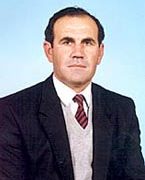
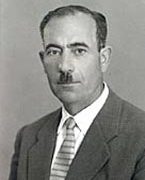
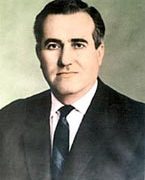
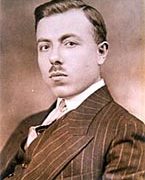
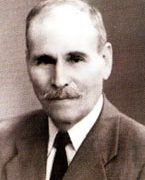
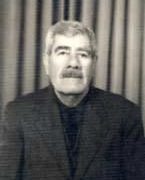
General Information
The municipality of Athienou is in the south edge of Mesaoria plain. During the Ottoman occupation it used to be a mid-road junction connecting the port of Larnaka with the capital Lefkosia. Utilizing this advantage many locals engaged in a lucrative profession called ‘‘kiratzi’’ – carrying people and goods with their mules or donkeys – not only in the aforementioned cities but also in several other parts of Cyprus. During the Ottoman occupation (1571 – 1878) most europeans who traveled to Cyprus and wrote about it, mentioned using ‘‘kiratzides’’ from Athienou during their tours on the island. This profession contributed significantly to the development of Athienou.
During the british occupation (1878 – 1960) Athienou lost its privileged position due to the fact that Lefkosia and Larnaka were connected through a new road, passing through the communities of Pyroi and Koshi. A secondary road was connecting Athienou with the Lefkosia – Larnaka road at a point near Pyroi. Through Pyroi the distance between Athienou and Lefkosia was 13 miles (21 km) and Athienou – Larnaka 16 miles (26 km). After the unlawful occupation of Pyroi by Turkish troops in August 1974 Athienou is now connected to Lefkosia through a new road which connects with the road Lympia – Dali – Nicosia. Through this road, the distance Athienou – Lefkosia increased to 35 km while the distance to Larnaka via Koshi increased to 27 km. Since 1989 Athienou communicates with Lefkosia and Larnaka via a four-lane motorway (highway). A junction connects Athienou at a point near Lympia for the connection to Lefkosia. Through the four lane highway the distance Athienou – Lefkosia is 38 km. A junction at a point near Koshi connects Athienou to the highway towards Larnaka and the distance is 33 km. Since 2003 Athienou and Larnaka are connected through a road that passes outside the community of Avdellero and joins at a point near the municipality of Aradippou with the highway going from Larnaka towards the tourist area of the Ayia Napa and Paralimni municipalities.
A road to the east of Athienou connects it with the turkish village of Melousia (distance of 3.5 km.) and continuing from there to the villages of Tremetousia, Arsos and Lysi, where it connects to the old road Lefkosia – Famagusta. The road Athienou – Lysi was blacktoped in 1960. North of Athienou is the turkish village of Agia (3 km.) and the greek village of Tymbou (5 km.) with a slight deviation to the east for Agia and to the west for Tymbou. Their connection to Athienou was through a dirt road. Northwest of Athienou is the mixed (Turkish Cypriots/ Greek Cypriots) village of Pyroi (6 km.) and 1 km further the village of Marko. The road Athienou – Pyroi was blacktopped in 1948. Southwest of Athienou is the turkish village of Petrofani (3 km.) and 2 km further south the archaeological site of Malloura. The road Athienou – Petrofani was blacktopped in 2004 and Petrofani – Malloura in 2007. South of Athienou is the village of Avdellero (6 km.) and southeast the village of Troulloi (7 km.). The old road Athienou – Avdellero was blacktopped in 2003, while the old road Athienou – Troulli remains inaccessible to vehicles.
Excavations at the site of ‘‘Pampoulari tis Koukkounninas’’, about a hundred meters north of Athienou, made by a jewish archaeological mission revealed that the area of Athienou was inhabited since at least the 14th century BC. During the 12th century Achaeans from the Peloponnese city Sicyon, established a colony in the region. Their leader was Golgos, who gave his name to the city. Ruins of the fortified city of Golgoi is located one kilometer north of Athienou. Golgoi experienced their highest peak during the classical period (5th and 4th centuries BC). The primary cause of their flourish had been the existence of a sanctuary in the area offered to goddess Golgia Aphrodite who had a Hellenic nationwide reputation. It is very likely that the name of the goddess is the reason behind the name of the city. The city declined during the Hellenistic period (294-58 BC) after the siege and occupation by Ptolemy I in the late 4th or early 3rd century BC. The settlement continued to exist during the Roman period (58 BC – AD 330 or 395) and Byzantine period (330 or 395-1191 AD), but there is no evidence regarding its name. The name of Athienou was first mentioned in the “Chronicles” of a Cypriot chronicler Leontios Machairas, who lived between 1360 and 1450 AD during the Frankish period (1192-1489). The name for Athienou remained unchanged until today, although in Venetian maps it is marked as Atirna. The Turks named Athienou as ‘‘Kiratzikioi’’, meaning a village where ‘‘kiratzides’’ lived.
During the final years of the Ottoman occupation Athienou administratively belonged to the ‘‘kaza’’ or ‘‘katiliki’’ (province) of Famagusta and the ‘‘Nahieh’’ (nahieh = vice governship,) of Mesaoria. This was true even until the first decade of the british rule, and then placed in the district of Lefkosia and the vice governship of Deyirmenlik or Kythreas. Since 1927 it belongs to the district of Larnaca.
In subsequent censuses and until 1974 Athienou presented a steady population growth as follows: 1891: 1367 inhabitants (705 males, 662 females), 293 houses. From the villages in the vice governship of Kythrea, Athienou was the second largest village with the first being Kythrea (1653 inhabitants).
1901: 1569 inhabitants (790 males, 779 females), 335 houses.
1921: 2,220 inhabitants (1,095 males, 1,125 females), 461 houses.
1931: 2451 inhabitants (1183 males, 1268 females), 519 houses. From all males 8 were marked as muslims, who possibly were police officers or other governmental officials or even turks from neighboring villages that happened to be in Athienou the day of the census. They were not permanent residents of Athienou and this was understood from the fact that the female population of the village did not include any muslims. Therefore, the 8 Muslims who were recorded as residents of Athienou did not have any women or children accompanying them. The census of 1891 still recorded 8 male Muslims in Athienou amongst its inhabitants. In other censuses, far fewer muslims were recorded in the population of Athienou. From the villages of Larnaka, where Athienou belonged since 1927, only Lefkara had a larger population (2,602 inhabitants), while third came Aradippou (2,373 inhabitants).
1946: 3,169 inhabitants, 708 houses.
1973 (a year before the Turkish invasion): 3.739 inhabitants.
1976: 3.390 inhabitants.
1982: 3.574 inhabitants.
1992: 3.868 inhabitants.
2001: 4.261 inhabitants.
2011: 5015 inhabitants
After the Turkish invasion and occupation, a refugees’ settlement was established in Athienou, having 39 houses.
In 1926 Athienou became a municipality. At a request of its residents the title municipality was abolished in 1935, but reestablished in 1948. Since then it functions completely as a municipality which is a principal factor for its development.
Before 1974 Athienou had the largest grain production in the island. Farmers from Athienou not only cultivated their own fields but also rented and cultivated large parcels of land even in remote parts of Cyprus. This went on to an even greater extent after the turkish invasion, which resulted in a very large part of the arable land of Athienou being occupied by the turkish troops.
After the independence (1960) most of Athienou farmers engaged in both farming and stock breeding. Along the traditional sheep breeding that grew dramatically, they engaged in cattle, pig, and poultry breeding. During the decades 1940 – 1960 the area of Athienou was breeding more sheep per square mile than any other region in Cyprus.
The developed stock breeding, always consequently meant developed cheese making. In 1915, the first cheese and dairy factory with european specifications was established in Cyprus and specifically in Athienou. From 1940 to 1960 seven cheese and dairy factories were set up in Athienou with a 70% share in nationwide production of Kefalotyri, Kashkaval and halloumi.
Bread was the product that made Athienou famous all over Cyprus more than any anything else. Apart from the traditional bakeries that counted ten in the village and daily supplied the market with thousands of breads, bagels and other baked goods, bakers from Athienou built bakeries in all cities and major towns of Cyprus. Marriage delights produced in Athienou were also in high demand all over Cyprus. Before 1974 Athienou was the largest center for producing groats.
Athienou was also the main supplier of agricultural tools to farmers all over Cyprus. Already by 1950 blacksmiths’ of Athienou satisfied almost all farmers’ needs regarding plows, seeders, lubricators, sprayers, and other agricultural tools. The tools made in Athienou displaced the european ones, not only because they were cheaper but also more solid, sustainable and adapted to the soil conditions of Cyprus. Until 1974 these tools were also exported to neighboring countries.
The clothing industry was also flourishing in Athienou, until the early 90s, employing a considerable number of locals. Ten clothing factories were operating in the community while locals had similar factories in Lefkosia, Larnaka and Limassol. These garments were not only of great demand in Cyprus, but were also exported in large quantities in Libya and England. Globalization and the flooding of markets with cheap chinese products brought about the decline of this industry. In previous years, many local females engaged in the ‘’Ploumi’’ of Athienou and many local embroidery merchants traded these embroideries in Europe and America.
The existence of many small industries in Athienou contributed to the government developing, one kilometer west of Athienou, an industrial area, which was launched in 1996. even though it is very close to the occupied area by turkish troops not only local industries (agricultural tools, dairies, carpenters, blacksmiths,) moved to the area but it also attracted foreign ones.
Regarding religion there are four large and three smaller churches. The oldest one is the church of Panagia Eleousa (Virgin Mary), which according to legend was built in 1711. The church of St. George was founded in 1860, Agios Fokas in the early 1880s, the new church of Virgin Mary in 1947, the church of Saint Lazarus located in the cemetery in 1986, the church of St. Epiphanios in 1995 and the church of the Holy Apostles located next to the premises of Kleantheios Elder Care Center in 2008.
In Athienou the following educational institutions operate: a nursery center, kindergarten, two elementary schools and a three-class high school. Towards the intellectual and aesthetic polishing of the people, contribute the Kallinikeio Municipal Museum, housed in the Municipal Hall, the Municipal Library, Konstantinelenio Center for Adults and two private art workshops.
Athienou exhibits an intense cultural life. Main conveyors of cultural activities are the Municipal Cultural Society, the Cultural Association of Rea and the Cultural Association of Malloura with choirs, dance and drama groups. Equally important is the presence of the School of Byzantine Music which is under the Holy Metropolis of Tremithounta. Apart from the cultural services of the ministry of Education and Culture great support to these cultural groups are provided from the municipal Authorities and the Coop Bank of Athienou. The municipal authorities offer their premises’ halls for art exhibitions and lectures.
Of equal importance is the high involvement in sports with key contributors the historical clubs of OTHELLOS and ORFEAS ATHIENOU as well as the Athienou Youth Union (ENA).
Athienou was and still is fortunate enough to have many benefactors, most important of which are Mr. Chatzikostantinos Lytras, Mr. Michalis Georgiou, Mr. Kallinicos Stavrovouniotis and Mr. Nicos Mougiaris.
Regarding security Athienou is monitored by the Athienou police station, which was established since 1905. It was housed in a rented house until 1946, year in which it moved to its own premises, erected by the Government with a cost of 4,000 pounds (6,834 Euros) at Griva Digeni avenue at the at the north end of the community.
Since 1945 a hospital also operates in Athienou. Until 1960 it was housed in a rented house, when it moved to its own premises in an estate donated by Mr. Chatzikostantinos Lytras to his community. Private doctors and private pharmacies, cover the needs of the local population while a private chemist provides laboratory services. Furthermore, elders can get any kind of care at the Kleanthios Elder Care Center which is one of the best manors of welfare in Cyprus and can be even served food at the the Konstantineleneio Adult Center. Another governmental agency in Athienou is the postal office, operating since the 1950s. Until 1974 the police station, hospital and post office served the surrounding communities as well.
Within the municipality locals can find almost all services and consumer goods available in big cities. Adding to all these one shouldn’t forget the banking institutions with the oldest and most important being the Cooperative Credit Society of Athienou, which is the basic economic pillar of the whole municipality. In addition, there are law and real estate agencies, taverns, restaurants, cafes and banquet halls, laundries, garages and car washes, barbers, hairdressers and beauty salons, bookstores, gyms and swimming pools, supermarkets, and shops of all kinds. All these contribute so that Athienou even though being a big agricultural center, does not lack of any urban characteristics.
Although since August 1974 Athienou is surrounded by the turkish troops and the buffer zone, with a non-occupied horizon only to the south, it remains a town full of life. All these thanks to its hardworking and creative citizens and the diverse and constant support from all cypriot governments.
…………………………………………………………………………………………………………………………………………………………………………………..
[1] Μεσαριά (η), στην κυπριακή διάλεκτο Μεσαρκά. Παλαιότερα, Μεσαριά ονομαζόταν ολόκληρη η κεντρική πεδιάδα της Κύπρου, που εκτείνεται από τον κόλπο της Αμμοχώστου έως τον κόλπο του Μόρφου. Αργότερα επικράτησε να λέγεται Μεσαριά μόνο το τμήμα ανατολικά της Λευκωσίας, ενώ το δυτικό τμήμα ονομάζεται πεδιάδα του Μόρφου. (Βλέπε: Γιώργου Καρούζη α) Γεωγραφία της Κύπρου. Στράβων, Λευκωσία 1979, σ. 202 – 210 β) Σύγχρονη Γεωγραφία της Κύπρου, τ.1. Σέλας, Λευκωσία 1997, σ. 53 – 55). Οι λόγιοι, με πρώτο τον αρχιμανδρίτη Κυπριανό, συγγραφέα του βιβλίου Ιστορία Χρονολογική της Νήσου Κύπρου, ονόμασαν την κεντρική πεδιάδα Μεσαορία ως ευρισκόμενη στο μέσο ορέων, δηλαδή των οροσειρών του Πενταδακτύλου και του Τροόδους. Ωστόσο λανθασμένα έχει εκληφθεί ως δεύτερο συνθετικό της Μεσαριάς η λέξη όρος. Με το όνομα Μεσαριά συναντούμε χωριά στα ελληνικά νησιά Άνδρο, Σύρο, Σαντορίνη και Κέρκυρα, ενώ η μεγαλύτερη πεδιάδα της Κρήτης ονομάζεται Μεσαρά (η). Ο μεγάλος Έλληνας γλωσσολόγος Γεώργιος Χατζηδάκις ετυμολογεί το Μεσαριά από το «μεσάρης», θηλυκό του οποίου είναι η μεσαρέα – μεσαριά. Πιθανή είναι και η ετυμολογία από το «μέσα μεριά», που σημαίνει μέρος που βρίσκεται στην ενδοχώρα. Ωστόσο η λανθασμένη ονομασία Μεσαορία για την κεντρική πεδιάδα της Κύπρου έχει επικρατήσει πλήρως.
[2] Report on the Census of Cyprus, 1881, with Appendix, by Frederick W. Barry … London 1884, p.21. Ωστόσο στην σ.8 εντελώς λανθασμένα αναφέρεται ότι οι κάτοικοι ήταν 1920. Αυτό οδήγησε τον Barry και σε δεύτερο σφάλμα, ότι δηλ. η αναλογία κατοίκων ανά οικία ήταν 7,4 (1920 κάτοικοι : 260 οικίες) και ότι τα σπίτια της Αθηαίνου ήταν τα πιο πυκνοκατοικημένα σ’ ολόκληρη την Κύπρο. Ολόκληρος ο πληθυσμός της Κύπρου το 1881 ήταν 186.173 πρόσωπα, συμπεριλαμβανομένων των Βρετανών στρατιωτικών και όσων επέβαιναν σε εμπορικά πλοία στα λιμάνια του νησιού. Όλα τα στοιχεία που δίνονται στην συνέχεια για την Αθηαίνου έως την απογραφή του 1946 βασίζονται στα Census που δημοσίευαν οι Βρετανοί κάθε δέκα χρόνια.
[3] Εκτός από τα στοιχεία του 1992, που λήφθηκαν από το βιβλίο «Απογραφή Πληθυσμού 1992, τ.1, Γενικά και Δημογραφικά Χαρακτηριστικά», Τμήμα Στατιστικής και Ερευνών, Υπουργείο Οικονομικών, Λευκωσία 1994, τα υπόλοιπα στοιχεία έχουν ληφθεί από την Μεγάλη Κυπριακή Εγκυκλοπαιδεία, τ.1, λήμμα Αθηένου.
[4] Jack C. Goodwin, An historical Toponymy of Cuprus. Fifth edition 1985, vol. 1, p.260.
[5] Φάκελος SA/827/1945, p. 21, 23 red, Κρατικό Αρχείο Κύπρου.
Etymology of the name «Athienou»
Η πρώτη γνωστή γραπτή πηγή, στην οποία γίνεται αναφορά στην Αθηαίνου, είναι το Χρονικόν του Λεόντιου Μαχαιρά, ο οποίος έζησε επί Φραγκοκρατίας, μεταξύ των ετών 1360 και 1450.
Τρεις είναι οι σοβαρότερες ετυμολογίες του ονόματος Αθηαίνου. Σύμφωνα με αυτές η ονομασία Αθηαίνου είναι κυριώνυμο, δηλαδή όνομα που φανερώνει τον κύριο, τον ιδιοκτήτη, τον οικιστή ενός τόπου.
Παλιοί λόγιοι θεωρούσαν ότι ο οικιστής ήταν κάποιος Αθηναίος (καταγόταν δηλαδή από την Αθήνα) ή κάποιος που ονομαζόταν Αθήναιος και ότι με αναγραμματισμό αυτού του ονόματος προήλθε σε γενική πτώση η Αθηαίνου: τα κτήματα του Αθηναίου, τα κτήματα του Αθηαίνου, η κώμη του Αθηαίνου, η Αθηαίνου. Έτσι η Αθηαίνου γραφόταν με ήτα (η) και άλφα γιώτα (αι) και η γραφή αυτή επικράτησε για περισσότερο από έναν αιώνα.
Ο μεγάλος φιλόλογος και καθηγητής στα πανεπιστήμια του Λονδίνου και της Αθήνας Σίμος Μενάρδος υπέθεσε ότι κύριος της γης και οικιστής της Αθηαίνου ήταν κάποιος Αθηνογένης: τα κτήματα του Αθη(νο)γένους, του Αθη(γ)ένου(ς), του Αθηένου, η κώμη του Αθηένου, η Αθηένου. Γι’ αυτό πρότεινε τον ορθογραφία ήτα (η) και έψιλον (ε).
Ο Κύπριος γλωσσολόγος Μενέλαος Χριστοδούλου εικάζει ότι οικιστής της Αθηαίνου ήταν κάποιος Φράγκος που ονομαζόταν Etienne (Ετιέν), που είναι γαλλική απόδοση του ελληνικού ονόματος Στέφανος. Από το Etienne ή παραλλαγές αυτού του ονόματος, όπως Tenot, Thenot, Tienot, Thienot, προέκυψε το εξελληνισμένο Ετιένος ή Αθιένος. Σύμφωνα με την εικασία αυτή, τα οικήματα αυτού του Φράγκου Αθιένου, που είχε κτήματα στην περιοχή, αποτέλεσαν τον πυρήνα του χωριού Αθιένου: Τα κτήματα και οικήματα του Αθιένου, η κώμη του Αθιένου, η Αθιένου. Με βάση την ετυμολογία αυτή ο Μενέλαος Χριστοδούλου πρότεινε την ορθογραφία γιώτα (ι) και έψιλον (ε). Η γραφή Αθιένου έχει περάσει στο βιβλίο A Complete Gazeteer of Cyprus, δηλαδή το Πλήρες Τοπωνυμικόν Λεξικόν της Κύπρου, το οποίο έχει γραφτεί από το Μενέλαο Χριστοδούλου, πρόεδρο της Μόνιμης Κυπριακής Επιτροπής Τυποποιήσεως Γεωγραφικών Ονομάτων και έχει κατατεθεί από την Κυπριακή Κυβέρνηση στα Ηνωμένα Έθνη.
Γιάννης Λάμπρου, Iστορικός
MUNICIPALITY OF ATHIENOY – History major parts
3.12.1922: Εβδομήντα κάτοικοι της Αθηαίνου με επιστολή που φέρει την υπογραφή τους ζητούν από τον Μέγαν Αρμοστή (Κυβερνήτη της Κύπρου) σερ Μάλκολμ Στήβενσον την ίδρυση δημαρχείου στην κοινότητά τους. Ο Aρμοστής απορρίπτει το αίτημά τους, επειδή θεώρησε ότι τα έσοδα του δημαρχείου, όπως τα παρουσίασαν οι κοινοτικές αρχές, θα ήταν ανεπαρκή.
28.10.1924: Ο μουχτάρης Ιάκωβος Ν. Ιακωβίδης και οι αζάδες Κώστας Κουρσάρης, Σταύρος Μ. Σάκκαλος και Χαράλαμπος Χωματένος με επιστολή τους προς τον Μέγαν Αρμοστή ανανεώνουν την αίτηση για ίδρυση δημαρχείου στην Αθηαίνου.
29.1.1925: Η Αθηαίνου με διάταγμα του Μεγάλου Αρμοστή ανακηρύσσεται σε Δήμο, όμως οι δημοτικές εκλογές αναβάλλονται για τον Μάρτιο του 1926.
Μάρτιος 1926: Υποψηφιότητα υποβάλουν μόνο οχτώ άτομα, όσες ακριβώς ήταν και οι θέσεις για δημοτικούς συμβούλους, που ο Κυβερνήτης είχε εγκρίνει για την Αθηαίνου. Έτσι και τα οχτώ αυτά άτομα ανακηρύσσονται δημοτικοί σύμβουλοι, χωρίς να χρειαστεί να διεξαχθούν εκλογές.
6.4.1926: Πρώτη συνεδρία του Δημοτικού Συμβουλίου, κατά την οποία ανακηρύσσεται παμψηφεί δήμαρχος ο Ιωάννης Αντωνίου Λύτρας και αντιδήμαρχος ο Γεώργιος Χατζηγιαννακού. Τα απλά μέλη του Δημοτικού Συμβουλίου: Παναγιώτης Γ. Λύτρας, Κώστας Φ. Χατζηγιάννης, Ευέλθων Ν. Ιακωβίδης, Χριστόδουλος Γ. Λαμπασκής, Μιχαήλ Χατζηχριστόφης και Χαρίδημος Ι. Χατζηχάρος. Η 6η Απριλίου 1926 μπορεί να θεωρηθεί ως η γενέθλια μέρα του Δημαρχείου της Αθηαίνου.
21.5.1927: Κατόπιν αιτήσεως του Δημοτικού Συμβουλίου διεξάγεται δημοψήφισμα, κατά το οποίο 426 κάτοικοι ζητούν την υπαγωγή της Αθηαίνου στην επαρχία της Λάρνακας, ενώ μέχρι τότε η κωμόπολη ανήκε στην επαρχία Λευκωσίας. Το Δημοτικό Συμβούλιο είχε δώσει πίστη στις υποσχέσεις του μεγάλου ευεργέτη Μιχαήλ Γεωργίου και του δημάρχου Λάρνακας Δημητρίου Ν. Δημητρίου (Μάτσα), ότι, αν η Αθηαίνου υπαγόταν στη επαρχία της Λάρνακας, θα ικανοποιείτο πιο εύκολα το αίτημα των κατοίκων να κατασκευαστεί ασφαλτοστρωμένος δρόμος, που θα ένωνε την Λευκωσία με την Λάρνακα μέσω Πυροΐου – Αθηαίνου – Αβδελλερού και Αραδίππου. Μόνο ένας κάτοικος ψήφισε υπέρ της παραμονής της Αθηαίνου στην επαρχία Λευκωσίας. Έτσι την 1η Σεπτεμβρίου 1927 η Αθηαίνου προσαρτήθηκε στην επαρχία Λάρνακας μαζί με το γειτονικό χωριό Πετροφάνι.
23.3.1929: Στις δημοτικές εκλογές κατέρχονται δύο συνδυασμοί. Κερδίζουν και οι οχτώ υποψήφιοι του συνδυασμού του Ιωάννη Λύτρα και καταρτίζονται σε σώμα ως εξής:
Δήμαρχος : Ιωάννης Αντ. Λύτρας. Αντιδήμαρχος: Γεώργιος Χατζηγιαννακού. Απλά μέλη του Δημοτικού Συμβουλίου: Χαρίδημος Ι. Χατζηχάρος, Παναγιώτης Γ. Λύτρας, Χρυσόστομος (Χρυσός) Β. Φιάκκου, Κώστας Φ. Χατζηγιάννη, Χριστόδουλος Γ. Λαμπασκής, Πέτρος Παπακωνσταντίνου.
28.8.1930: Ο δήμαρχος Ιωάννης Λύτρας παραιτείται και τον διαδέχεται ο Χαρίδημος Χατζηχάρος.
12.12.1932: Δήμαρχος αναδεικνύεται ο Σωτήρης Σταύρου Μεστάνας στην θέση του Χαρίδημου Χατζηχάρου, ο οποίος παραιτήθηκε.
9.3.1935 : 303 κάτοικοι Αθηαίνου, με επικεφαλής τον πρώτο δήμαρχο Ιωάννη Λύτρα με επιστολή τους προς τον Κυβερνήτη σερ Χέρμπερτ Ρίτσμοντ Πάλμερ, ζητούν την κατάργηση του Δημαρχείου, με την δικαιολογία ότι είναι λίγα τα έσοδά του και δεν ανταποκρίνεται στις υποχρεώσεις του. Ανταποκρινόμενος στο αίτημα των κατοίκων ο Κυβερνήτης με διάταγμά του καταργεί το Δημαρχείο της Αθηαίνου την 1η Απριλίου 1935.
30.11.1942: 523 κάτοικοι Αθηαίνου με επικεφαλής τον μουχτάρη Κυριάκο Μεστάνα με επιστολή προς τον Κυβερνήτη σερ Τσαρλς Κάμπελ Γούλεϊ υποβάλλουν αίτηση για επαναλειτουργία του Δημαρχείου. Η αίτηση απορρίπτεται, όμως οι πιέσεις προς την Κυβέρνηση συνεχίζονται ώς το 1947. Αποκορύφωμα των πιέσεων ήταν συλλαλητήριο που έγινε στις 14.12.1947. Οργανωτής του συλλαλητηρίου και ομιλητής σ’ αυτό ήταν ο Μελής Ζαχαριάδης, ο οποίος από το 1942 πρωταγωνιστούσε στην επανασύσταση του Δημαρχείου. Τελικά ο Κυβερνήτης Ρέτσιναλντ Φλέτσερ, λόρδος Γουίνστερ, συναινεί στην επαναλειτουργία του Δημαρχείου.
23.5.1948: Πρώτες εκλογές μετά την κυβερνητική απόφαση για επανασύσταση του Δημαρχείου Αθηαίνου. Τις εννιά θέσεις στο Δημοτικό Συμβούλιο διεκδικούν: α) Ο συνδυασμός της Δεξιάς με επικεφαλής τον Παναγιώτη Κουμενή, που υποστηριζόταν από τον Γεωργικό Σύλλογο ΡΕΑ. β) Ο συνδυασμός των Ριζοσπαστών με επικεφαλής τον Μελή Ζαχαριάδη. Η Αριστερά της Αθηαίνου κάλεσε τους οπαδούς της να ψηφίσουν τους Ριζοσπάστες, αλλά να καταψηφίσουν τον αρχηγό τους, Μελή Ζαχαριάδη. Τις εκλογές κέρδισε ο συνδυασμός του Παναγιώτη Κουμενή, τον οποίο το Δημοτικό Συμβούλιο ανέδειξε δήμαρχο, ενώ αντιδήμαρχο ανέδειξε τον Ανδρέα Χατζηθεοχάρους. Απλά μέλη του Δημοτικού Συμβουλίου αναδείχτηκαν: Λούκας Βαρνάβα, Ιωάννης Μ. Κραμβής, Παναγιώτης Κ. Δράκου, Πέτρος Παπακωνσταντίνου, Φίλιππος Πατσαλής, Τουμάζος Σουμμάκης, Κώστας Ι. Ζαννέτου. Εκτός από τον Ιωάννην Κραμβήν, που ήταν Ριζοσπάστης, όλοι οι υπόλοιποι ανήκαν στον συνδυασμό του Παναγιώτη Κουμενή.
10.5.1953: Δημοτικές εκλογές: Εκλέγονται και οι εννιά υποψήφιοι του συνδυασμού του Παναγιώτη Κουμενή, που υποστηρίχτηκε ξανά από τον Αγροτικό Σύλλογο ΡΕΑ. Αντίπαλος συνδυασμός ήταν εκείνος της Αριστεράς. Δήμαρχος αναδείχτηκε ξανά ο Παναγιώτης Κουμενής και αντιδήμαρχος ο Ανδρέας Χατζηθεοχάρους. Δημοτικοί Σύμβουλοι αναδείχτηκαν: Νίκος Βύζακος, Λούκας Βαρνάβα, Νικόλας Κ. Χατζηγιαννακού, Μιχαλάκης Κ. Ιωσηφίδης, Κώστας Γ, Ηρακλέους, Παναγιώτης Δράκος, Πέτρος Χριστοφόρου.
Εξαιτίας του αγώνα της ΕΟΚΑ (1.4.1955 – 19.2.1959) δεν έγιναν άλλες δημοτικές εκλογές και η δημαρχία του Παναγιώτη Κουμενή παρατάθηκε ώς το τέλος της Αγγλοκρατίας.
Μετά τις Συμφωνίες Ζυρίχης – Λονδίνου τον Φεβρουάριο του 1959 και την δημιουργία, εκτός από την Βουλή των Αντιπροσώπων, και δύο κοινοτικών βουλών, δηλαδή της Ελληνικής Κοινοτικής Συνέλευσης Κύπρου και της Τουρκικής Κοινοτικής Συνέλευσης Κύπρου, ο Παναγιώτης Κουμενής αναδείχτηκε βουλευτής της Ελληνικής Κοινοτικής Συνέλευσης και παραιτήθηκε από το αξίωμα του Δημάρχου Αθηαίνου. Δήμαρχος έγινε ο μέχρι τότε αντιδήμαρχος Ανδρέας Χατζηθεοχάρους, ενώ αντιδήμαρχος αναδείχτηκε ο Μιχαλάκης Κ. Ιωσηφίδης.
Ένεκα της πολιτικής ανωμαλίας που προκλήθηκε από την τουρκοκυπριακή ανταρσία (Δεκέμβριος 1963) και την τουρκική εισβολή (Ιούλιος – Αύγουστος 1974), για 26 περίπου χρόνια μετά την ίδρυση της Κυπριακής Δημοκρατίας, δεν διεξήχθησαν δημοτικές εκλογές και η δημαρχία του Ανδρέα Χατζηθεοχάρους, με διακοπή δύο περίπου χρόνων (Ιανουάριος 1963 – Δεκέμβριος 1964), παρατάθηκε ώς τον Μάιο του 1986. Σ’ όλο αυτό το διάστημα αντιδήμαρχος παρέμεινε ο Μιχαλάκης Ιωσηφίδης, ενώ τα απλά μέλη του Δημοτικού Συμβουλίου ήταν οι Ανδρέας Τουμάζου, Κώστας Ευθυμίου και Χαράλαμπος Κουτσουλλής. Τον Κώστα Ευθυμίου, που παραιτήθηκε το 1973, αντικατέστησε ο Κωσταντός Ηλία Χειμώνας, και τον Χαράλαμπο Κουτσουλλή, που μετανάστευσε στην Αυστραλία μετά την τουρκική εισβολή, αντικατέστησε τον Δεκέμβριο του 1981 ο Ιωάννης Παυλίδης.
25.5.1986: Δημοτικές εκλογές. Σύμφωνα με νόμο που ψηφίστηκε το 1985, ο δήμαρχος εκλέγεται απευθείας από τους δημότες, ενώ οι δημοτικοί σύμβουλοι εκλέγονται με το αναλογικό σύστημα και όχι με το πλειοψηφικό, όπως ίσχυε επί αποικιοκρατίας. Δήμαρχος εκλέγεται ο Κώστας Φ. Σάκκαλος, που υποστηρίχτηκε από τον Δημοκρατικό Συναγερμό (ΔΗΣΥ). Τι έξι θέσεις των δημοτικών συμβούλων διεκδίκησαν τέσσερις συνδυασμοί, που υποστηρίχτηκαν από τα κόμματα ΔΗΣΥ, ΑΚΕΛ–Αριστερά, ΔΗΚΟ και ΕΔΕΚ. Εκλέχτηκαν: Ιωνάς Παπαπέτρου και Ολυμπιάδα Βύζακου (ΔΗΣΥ), Σταύρος Κασούμης και Ιωάννης Ζορπάς (ΑΚΕΛ – Αριστερά), Λούκας Βαρνάβα (ΔΗΚΟ) και Κώστας Χατζηπιερή (ΕΔΕΚ). Αντιδήμαρχος ψηφίστηκε σε συνεδρία του Δημοτικού Συμβουλίου ο Ιωνάς Παπαπέτρου.
22.12.1991: Δημοτικές εκλογές. Δήμαρχος εκλέγεται ο Παναγιώτης Πέτρου Κουμής, ο οποίος υποστηρίχτηκε από τα κόμματα ΑΚΕΛ και ΕΔΕΚ. Δημοτικοί Σύμβουλοι: Κώστας Ροκόπου και Κώστας Σταυρινού (ΔΗΣΥ), Ανδρούλα Έλληνα και Γεώργιος Σέργη (ΑΚΕΛ), Σπύρος Παπαουής (ΔΗΚΟ) και Μιχάλης Παπούτσας (ΕΔΕΚ). Αντιδήμαρχος: Γεώργιος Σέργη.
15.12.1996: Δημοτικές εκλογές. Δήμαρχος εκλέγεται ξανά ο Παναγιώτης Κουμή, ο οποίος υποστηρίχτηκε και πάλι από τα κόμματα ΑΚΕΛ και ΕΔΕΚ. Οι δημοτικοί σύμβουλοι αυξήθηκαν από έξι σε οχτώ και ήταν οι εξής: Μιχάλης Μαλλουρής, Ιωάννης Ζαννετή και Γεώργιος Παστού (ΔΗΣΥ), Γεώργιος Σέργη και Ανδρούλα Έλληνα (ΑΚΕΛ), Αχιλλέας Αχιλλέως και Ανδρέας Αντωνίου (ΔΗΚΟ) και Μιχάλης Παπούτσας (ΕΔΕΚ). Αντιδήμαρχος: Αχιλλέας Αχιλλέως.
16.12.2001: Δημοτικές εκλογές. Δήμαρχος εκλέγεται ο Γαβριήλ Καζάζης, που υποστηρίχτηκε από τον ΔΗΣΥ. Δημοτικοί σύμβουλοι: Μιχάλης Α. Καηλάς και Γεωργία Χατζηθεοχάρους (ΔΗΣΥ), Κυριάκος Παμπόρης και Αλκιβιάδης Τράχιλος (ΑΚΕΛ), Δημήτρης Ζαννετίδης και Μαρία Παπουή (ΔΗΚΟ), Μιχάλης Παπούτσας (ΚΙΣΟΣ = ΕΔΕΚ), και Γεώργιος Παστού (Νέοι Ορίζοντες). Τον Δημήτρη Ζαννετίδη, που παραιτήθηκε, αντικατέστησε ο Κώστας Καζαμίας (Παρτζίλης). Αντιδήμαρχος: Μιχάλης Παπούτσας.
17.12.2006: Δημοτικές εκλογές. Δήμαρχος εκλέγεται ο Σπύρος Παπουή, που υποστηρίχτηκε από το ΔΗΚΟ, το ΑΚΕΛ και την ΕΔΕΚ. Δημοτικοί σύμβουλοι: Σωτήρης Ζορπάς, Γεώργιος Παστού και Δημήτρης Φιάκκου (ΔΗΣΥ), Κυριάκος Παμπόρης και Θεόκλητος Ζορπάς (ΑΚΕΛ), Θρασύβουλος Παπαζαχαρίου και Ελένη Καζάζη (ΔΗΚΟ) και Μιχάλης Παπούτσας (ΕΔΕΚ). Αντιδήμαρχος: Κυριάκος Παμπόρης.
18.12.2011: Δημοτικές εκλογές. Δήμαρχος εκλέγεται ο Δημήτρης Παπαπέτρου, που υποστηρίχτηκε από τον ΔΗΣΥ. Δημοτικοί σύμβουλοι: Μιχάλης Α. Καηλάς, Σάββας Μαγκλής, Παρασκευή (Βίβια) Καραγιάννη και Ανδρέας Βουρής (ΔΗΣΥ), Κυριάκος Παμπόρης και Σωτήρης Καδής (ΑΚΕΛ), Θρασύβουλος Παπαζαχαρίου (ΔΗΚΟ) και Μιχάλης Παπούτσας (ΕΔΕΚ). Αντιδήμαρχος: Μιχάλης Παπούτσας. Τον αποβιώσαντα Μιχάλη Καηλά αντικατέστησε ο Γεώργιος Παστού.
18.12.2016: Δημοτικές εκλογές: Δήμαρχος εκλέγεται ο Κυριάκος Κώστα Καρεκλάς. Δημοτικοί σύμβουλοι: Παύλος Σπύρου, Γεώργιος Παστού και Δέσποινα Παστού (ΔΗΣΥ), Πέτρος Κολιάς και Ανδρέας Χατζηκυπριανού (ΑΚΕΛ), Ελευθέριος Κόλοκος και Αντώνης Τουλούπης (ΕΔΕΚ) και Μαρία Παπουή (ΔΗΚΟ). Αντιδήμαρχος: Γεώργιος Παστού.
Δημοτικοί γραμματείς μετά την επαναλειτουργία του Δημαρχείου το 1948: Παναγιώτης Ι. Παυλίδης (Μάιος 1948 – 1979), Ανδρέας Παπαϊωάννου (1980 – Απρίλιος 2002), Νατάσα Γεωργίου-Καρούσιου (Οκτώβριος 2004 – σήμερα). Μεταξύ Απριλίου 2002 και Οκτωβρίου 2004 χρέη δημοτικού γραμματέα εκτελούσε η Δέσποινα Πάντζιαρου-Γεωργίου.
Η συμβολή του Δημαρχείου στην πρόοδο της Αθηαίνου είναι ανεκτίμητη. Για τις δραστηριότητες του Δημαρχείου από τη ιδρύσεώς του μέχρι σήμερα βλέπε: α) Γιάννης Κ. Λάμπρου, Κεφάλαια από την Ιστορία και την Κοινωνία της Αθηαίνου, σελίδες 242-332. β) Τεύχη της εφημερίδα του Δήμου, ΑΘΗΕΝΟΥ.
Γιάννης Λάμπρου – Ιστορικός

